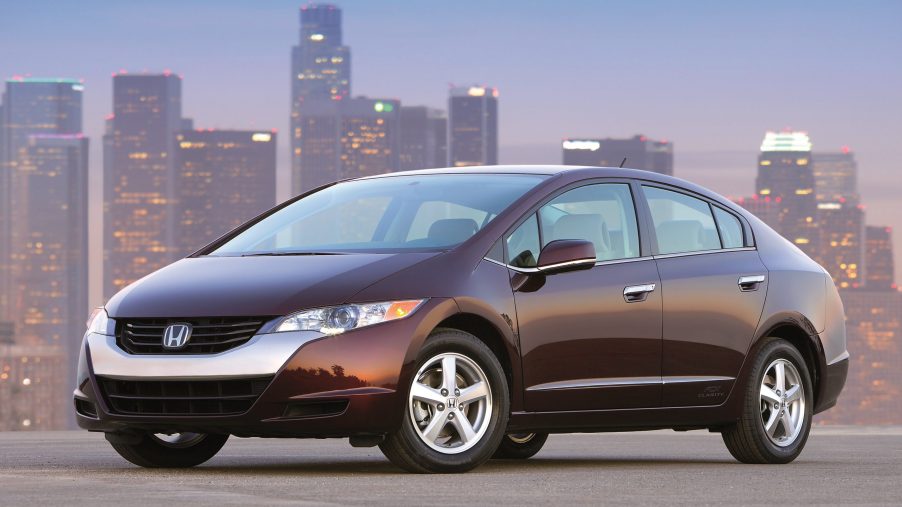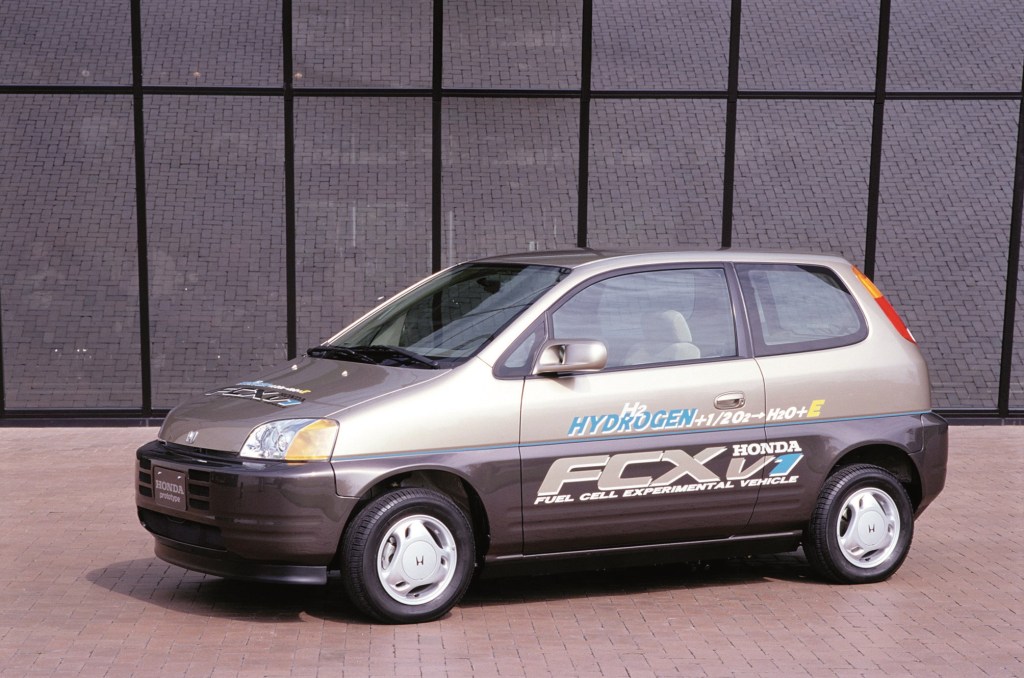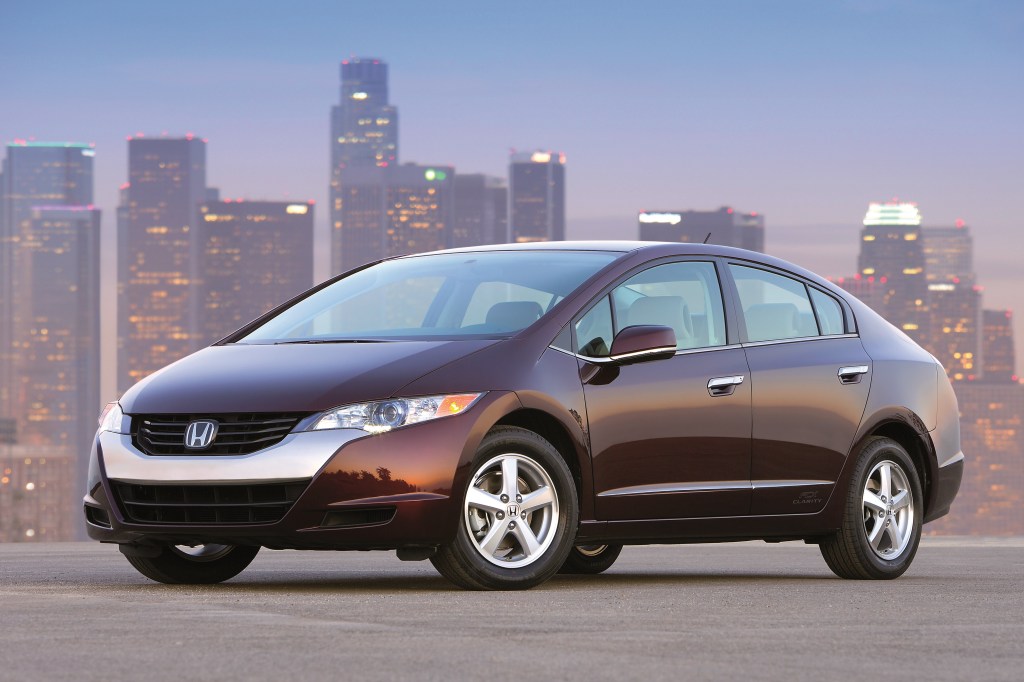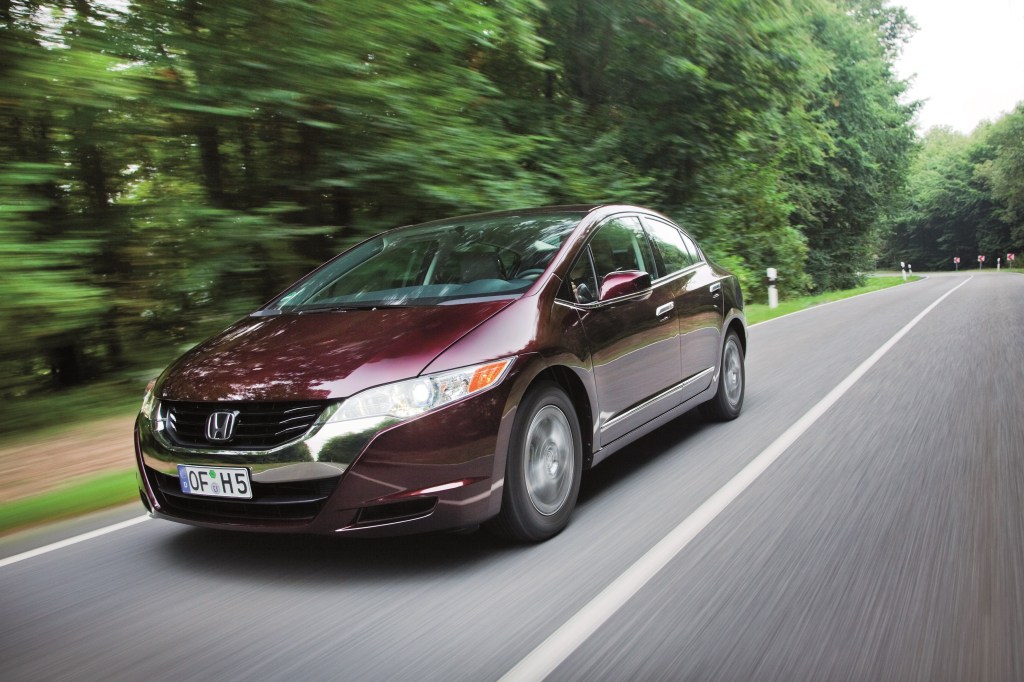
This Honda Fuel Cell Vehicle Was the Most Economical Car of 2010
Japanese automakers, especially Honda, have been vouching for hydrogen-powered vehicles over battery-electric cars. Unfortunately, the hydrogen infrastructure hasn’t been built up enough, and we still don’t have enough charging stations for electric cars. But let’s travel back in time to the one year where a hydrogen fuel cell car was the more fuel-efficient production vehicle in America. It’s called the Honda FCX Clarity, which would eventually become the Honda Clarity.

The Honda FCX Clarity concept was first debuted in 1999
While it’s not the first hydrogen fuel cell vehicle ever made, the Honda FCX, or Fuel Cell eXperiment, was first revealed in 1999 at the Tokyo Motor Show. And at the time, it was an impressive display of the company’s advanced technology. The hydrogen-powered car managed 80 horsepower and 118 miles of range. To put it in perspective, the infamous EV1 of the same era reached 137 horsepower, but could only travel 80 miles before it needed a charge.
But unlike the EV1, the Honda FCX Clarity didn’t go on sale immediately. In fact, the car went through three different generations before the production version became available in 2008. Granted, the car became the first hydrogen car to be certified by the EPA, and someone would occasionally purchase the concept on a lease. But it didn’t roll off a production line yet, these were one-off cars.
However, after almost 10 years of testing, the Honda FCX Clarity rolled off the assembly line. It was put on sale in Japan for the 2009 model year, and then sold to America in 2010, where it made history.
Why was the Honda FCX Clarity so important in 2010?

While it’s a very long document, the EPA’s 2020 Automotive Trends Report has some very interesting statistics riddled throughout. But none stuck out to me quite as much as Table 2.2 on page 11. It lists the vehicles with the overall highest fuel economy of that year, from 1975 all the way up to 2020.
Look in the second column, and you’ll find the most fuel-efficient cars of the year. From 1975 to 1999, they were gas or diesel vehicles. Then hybrids took the stage in the 2000s. But for just one year, a hydrogen fuel cell vehicle was the most economical car in America. That is, before electric cars came along.
For hydrogen and electric cars, that number is the miles per gallon equivalent, or MPGe, of how efficient the car really is. And for the Honda FCX Clarity, you’re looking at 60 MPGe, and after three redesigns, the car was vastly improved from the original 1999 concept.
The 2008 Honda FCX Clarity boasted 134 horsepower and could get up to 99 miles per hour. On top of that, it could travel 240 miles on a tank of hydrogen. And the Honda FCX Clarity lived a fairly long life, being discontinued in 2014, only to be replaced by a hydrogen fuel cell car of the same name. But if the FCX was produced for six years, why haven’t we heard of it?
The Honda FCX was an experiment, even in the production stage

While the FCX was a production hydrogen car, it wasn’t mass-produced. Honda boasted that, in its first year, a few dozen cars were sold in both the US and Japan. And after three years, Honda only planned to have 200 of these cars built. This predecessor to the Honda Clarity on sale now has, essentially, been swept under the rug. And I wasn’t able to find an exact number for how many of these cars were sold in their six-year existence.
What I can say, however, is that this overlooked, or completely forgotten hydrogen car made history. It’s the only fuel cell vehicle to be the EPA’s most economical car of the year. But today, the Honda Clarity, or hydrogen cars in general, aren’t as popular as EVs. But they still have a place and a purpose, serving as a way to clean up our emissions. All with the appeal of short fill-up times, and reasonable range.


